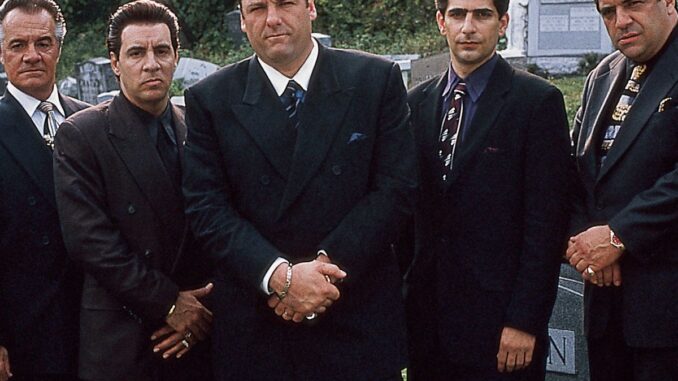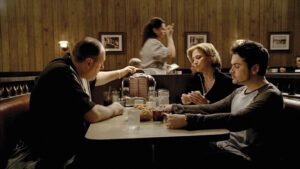
Why did The Sopranos end with a black screen?
If you enjoyed the massive “Sopranos: Definitive Explanation of the End”, I hope you’ll also enjoy this new annotated guide to the final scene. Here, every shot of the final scene will be analyzed. First, this essay will briefly illustrate how Chase set up the “never hear it” concept before the final episode. Then, this shot by shot analysis of the final scene will explain how the 10 second black screen is Tony’s final point of view, and that Tony never heard the shot that kills him.

Chase had three main agendas in accomplishing his vision for the final scene. First, he had to create a scene shown primarily through Tony’s point of view and set up (through a bell ringing/Tony POV pattern) the black screen as Tony’s final point of view because he had just been shot in the head. Second, he had to show how a normally wary Tony is able to get shot. Through Chase’s directing, editing and shot selection, we see how Tony never notices Members Only Guy (his eventual killer) looking in his direction and only takes notice of him for the first time when MOG goes to the bathroom. Chase also has Tony constantly distracted and looking down at his menu. Chase’s third agenda is to use the audience’s anxiety and anxiousness about knowing this is the final scene and that something important has to happen (which turns out to be to an enormous event that they will never actually see on screen) to increase the tension in the final scene. Chase again uses shot selection, editing, and music to manipulate the audience even though what’s actually occurring in the scene itself is fairly benign. Ultimately, Chase expertly balances the second and third agendas so that the audience’s paranoia and anxiety is certainly not Tony’s, who is otherwise relaxed and not fearful.
The shot by shot analysis will also briefly touch upon the meaning of the final scene. In carrying out Chase’s ultimate purpose behind the meaning of the scene, Chase sets up a happy moment for Tony so that we understand the fragility of life and how we can abruptly lose everything that matters to us when we die.
Some of the shots will include quotes from Chase including his recent remarks for The Director’s Guild of America. So consider this a sort of “cliff notes” guide to the original site, mostly encompassing Part 1 of the original piece but also, for the first time, going through every shot of the final scene.
But before we get to the shot by shot analysis, it will first be shown how Chase set up the final scene so that Tony will never hear the bullet that kills him.
